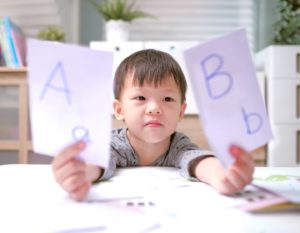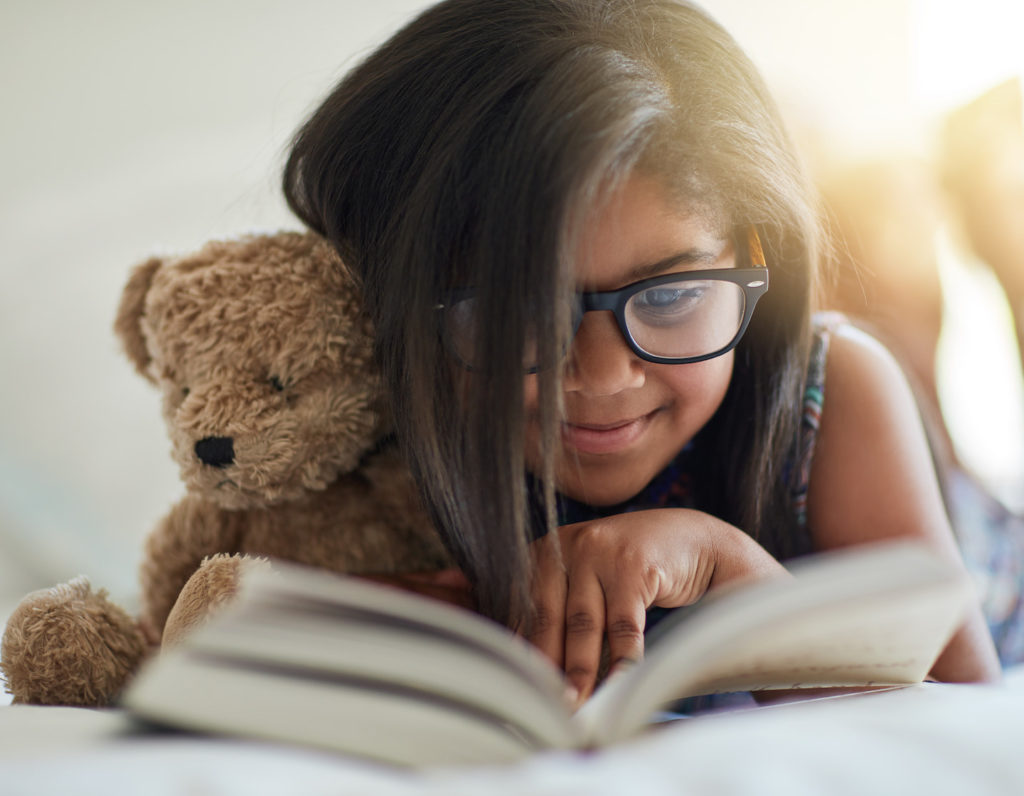
 Post Category - ParentingParenting - Post Category - Toddler & PreschoolerToddler & Preschooler - Post Category - 5-11 Year Olds5-11 Year Olds
Post Category - ParentingParenting - Post Category - Toddler & PreschoolerToddler & Preschooler - Post Category - 5-11 Year Olds5-11 Year OldsPoetry is a great learning tool for kids. Find out why exactly poetry for children is so important and how to get them started. With tips on how to encourage your budding poet and popular poems for children, here’s how to nurture and inspire the little lyricist in your life.
Literature has long been an essential part of a child’s development. Even so, poetry is often overlooked in favour of prose. In addition to its rhythmic nature, poetry is a way to communicate a lot in a small number of words. Beyond its soothing and sing-songy nature, it is also a form of expression that can benefit young children greatly, helping them develop creative language skills and become sophisticated thinkers.
While you’re probably already singing nursery rhymes or reading aloud books that make use of verse, it is time to take it up a notch and introduce the little ones to the world of poetry. In honour of World Poetry Day, we’re celebrating that artistic expression and imaginative language with you and your little ones.
Read more: The Best Children’s Books That Celebrate Diversity
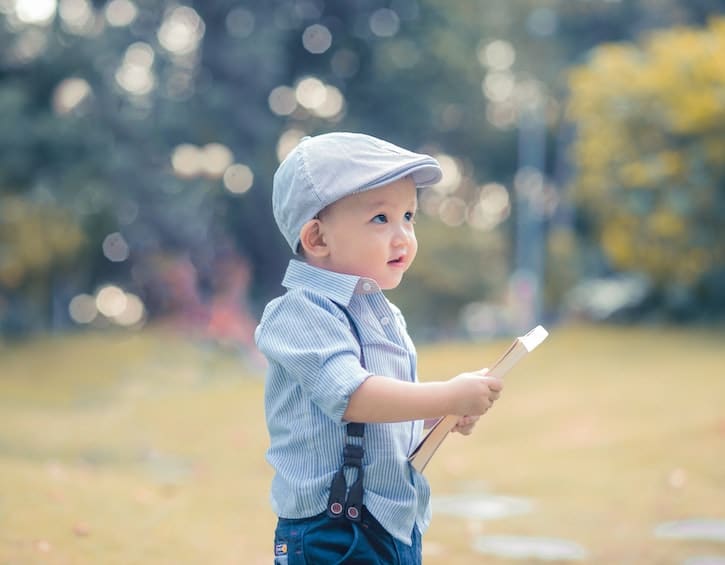
Why Should You Introduce Poetry To Your Child?
The idea that poetry could be something your child needs can feel a little far-fetched. We already know how essential reading is for little ones, but the importance of rhyme and verse might not be as convincing. Why should it matter if your children enjoy poetry? Is it really that significant?
As adults, poetry reading and interpretation makes use of our analysis and critical thinking skills – basically, it’s good for us! So it shouldn’t be surprising to hear that it’s also highly beneficial for our children. Think of poetry as a natural extension of lullabies and nursery rhymes. Children will respond to the short playful language, even if they’re too young to understand its meaning.
- Poetry is best known for aiding memory and language development
- Generally, rhyming makes it easier for your child to learn words through both audible and visual means
- The structure of poetry makes use of pattern and sequence, creating a familiar context for unfamiliar language
- Reading aloud helps your child practice the way they pronounce words and how they lend emotion to them through volume and pitch
In a way, it all works to improve phonological and phonemic awareness (to you and me, that’s the ability to focus on and manipulate individual sounds in spoken words) which allows your child to become a successful reader and aids them in speaking.
Read more: Skills That Our Children Will Need In 10 Years’ Time
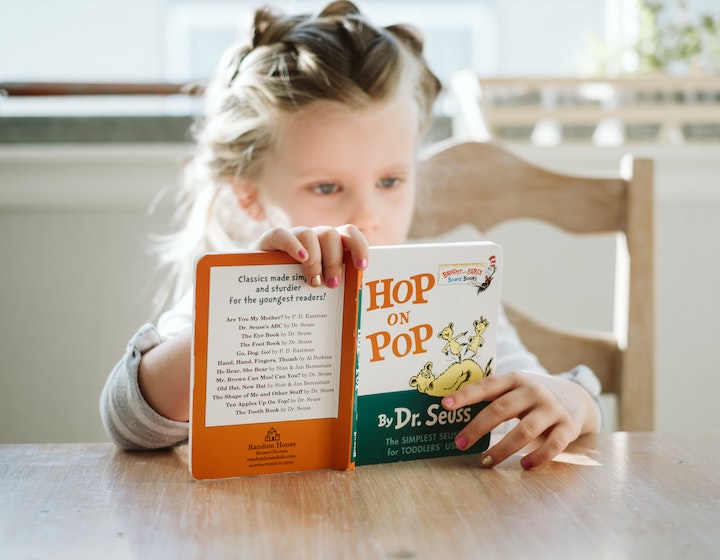
Poetry Teaches More Than Just Words
Your children will learn that there are words which sound alike but mean different things, and also which terms are synonymous. As a nice bonus, the use of recognisable patterns and sequences in poetry aids mathematic skills later on!
Poetry is known as a form of self-expression that teaches your child to learn about their emotions. It’s a healthy way for them to express themselves and cultivate valuable qualities like compassion and empathy. It also shows your child how to tell stories and how to look at everyday experiences in different ways.
Read more: Children’s Books: Best Modern Fairytales To Empower Sassy Girls And Boys
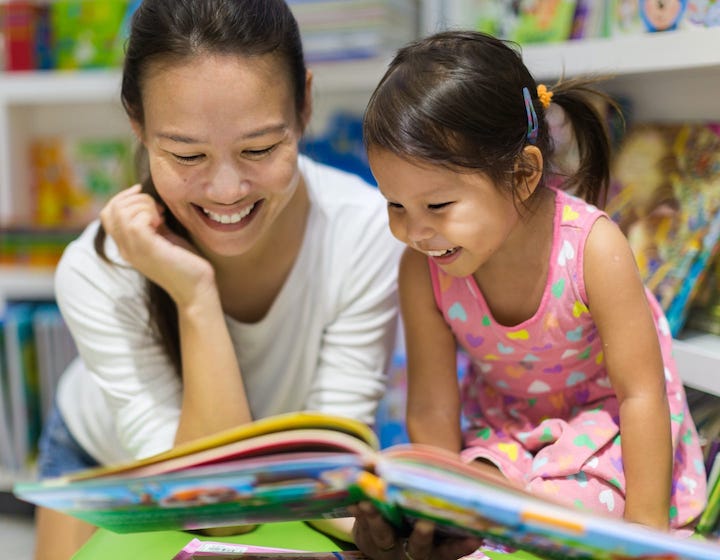
How To Introduce Poetry To Your Child: Reading!
Start by reaching for the books you already have on your shelves! We’re big fans of Dr. Seuss and Shel Silverstein as starter points and for when your child is a little older. You can read and help them memorise shorter poems, gradually moving on to more complex ones. Younger children might not have the skills to read themselves, but they’ll still enjoy listening and learning new words.
Not sure where to begin? We’ve rounded up some easy ones to get you started:
Poetry for children aged 4 to 6 years old
- Jabberwocky by Lewis Carroll. an old classic “nonsense” poem that gave us playful English words such as “chortle” (age 4+).
- The Magic Pocket: Selected Poems, by Michio Mado. This Japanese poet was the recipient of the international Hans Christian Andersen Medal in 1994 for his “lasting contribution to children’s literature (age 4+).
- Dirty Face, by Shel Silverstein. Silverstein is just one of the many poets who helped children’s literature move from morality tales to something that appealed to children’s imaginations and emotions (age 4+).
- We Sang You Home, Richard Van Camp board book. Beyond their rhythmic expressions, these poems celebrate familial relationships and are perfect for mamas looking to bond with the little ones (age 4+)
- Mother Doesn’t Want a Dog, Judith Viorst. You might know Viorst as the author of “Alexander and the Terrible, Horrible, No Good, Very Bad Day” (age 5+).
- The Day You Begin, Jacqueline Woodson’s picture book. The Young People’s Poet Laureate from 2015 to 2017, Woodson is critically acclaimed and a contemporary master of children’s literature (age 5+).
- The Spider and the Fly, by Mary Howitt. While this isn’t your typical happy nursery rhyme, this beautifully written poetic fable serves to teach the little ones an essential lesson on self-worth and the danger of trusting strangers (age 5+).
- Little Red Riding Hood and the Wolf, by Roald Dahl. is a reinterpretation of the fairytale, found in his very brilliant Revolting Rhymes (age 6+).
Poetry for children aged 7 years and up
- Please Mrs Butler, by Allan Ahlberg. From his same-titled collection of school poems that are all kid-friendly and good fun (age 7+).
- Ode to My Shoes, by Francisco X. Alarcón. Alarcón once said that “Children from the third grade to the sixth grade are truly excellent natural poets“ (age 7+).
- The Bean Eaters, by Gwendolyn Brooks. As one of the most highly-acclaimed poets in modern American poetry, Brooks’ poems are perfect for introducing the little ones to symbolism through easy-to-read and lyrical language (age 7+).
- How Do I Know When a Poem Is Finished?, by Naomi Shihab Nye. Nye is Palestinian-American, and her writing consistently interweaves identity and heritage (age 8+).
- Spin a Soft Black Song, Nikki Giovanni. Part of the Black Arts movement, Giovanni published her first book of poetry for children in 1971 (age 8+).
- Love That Dog, Sharon Creech. This is Creech’s diary-like description of the journey of a boy who has just started to read poetry (making it extra relatable for the little ones). With classic poems like The Red Wheelbarrow included in the back matter, the little ones will be exposed to and enamoured by a variety of poems (age 8+).
Note: Though the poems listed are great for children, do double check the content to make sure you’re comfortable with it before sharing!
Read more: Teacher Recommendations: Books For Reluctant Readers
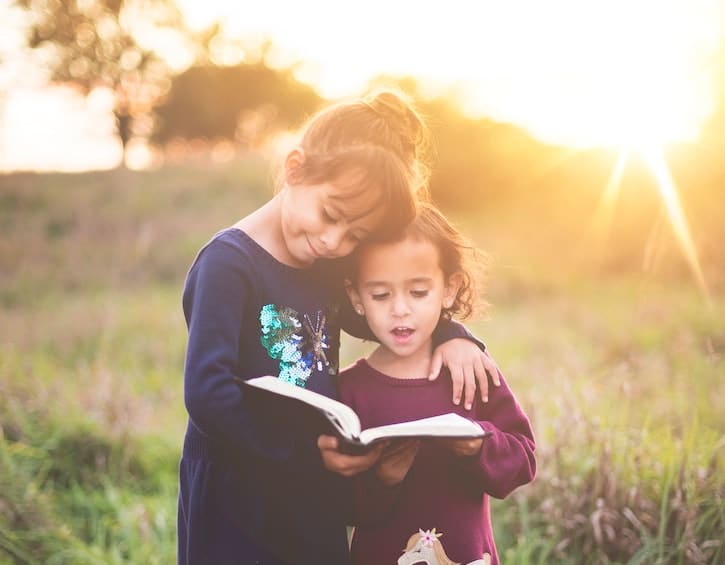
7 Tips To Encourage Your Budding Poets
You don’t need us to tell you about all the weird and wonderful ways in which children’s imaginations work, but here are some things you can do to help bring out their creative side:
![]() Start with riddles. Riddles are extremely helpful in getting the kids to be more creative and think outside the box. Afterwards, add some rhymes to the riddles and, voila, they’re making their own poems!
Start with riddles. Riddles are extremely helpful in getting the kids to be more creative and think outside the box. Afterwards, add some rhymes to the riddles and, voila, they’re making their own poems!
![]() Play games. Throw your child a line and help them come up with one in reply that rhymes. We also like word association games which help children create similes, metaphors and analogies. If you’re looking for more inspiration, cut out random words from old magazines and see what you can come up with.
Play games. Throw your child a line and help them come up with one in reply that rhymes. We also like word association games which help children create similes, metaphors and analogies. If you’re looking for more inspiration, cut out random words from old magazines and see what you can come up with.
![]() Tell stories by writing down those rhyming couplets you came up with earlier and create more to tell a story.
Tell stories by writing down those rhyming couplets you came up with earlier and create more to tell a story.
![]() Write a poem together. Try something fictional, something based on a real story and something specifically for a special occasion. If you want to go one step further, get some crayons and turn the poem into pictures!
Write a poem together. Try something fictional, something based on a real story and something specifically for a special occasion. If you want to go one step further, get some crayons and turn the poem into pictures!
![]() Experiment with different types of poetry. For example, with a haiku (which generally consists of three lines with 5-7-5 syllables) where you can sound out long words and clap along to break them down, challenging your child to stay within a particular style form. We also like acrostic poems (where the first letter of each line spells out a word or message) – you can start with names or specific themes!
Experiment with different types of poetry. For example, with a haiku (which generally consists of three lines with 5-7-5 syllables) where you can sound out long words and clap along to break them down, challenging your child to stay within a particular style form. We also like acrostic poems (where the first letter of each line spells out a word or message) – you can start with names or specific themes!
![]() Incorporate your cultural traditions. If you can speak another language, try adding in words from that tongue, or translations of your favourite words into writing. Do you have very special family stories or pastimes? Add them in. This is a fun way to teach your child more about themselves.
Incorporate your cultural traditions. If you can speak another language, try adding in words from that tongue, or translations of your favourite words into writing. Do you have very special family stories or pastimes? Add them in. This is a fun way to teach your child more about themselves.
![]() Make poetry portable. On top of the usual puzzle games, download digital library apps like Epic! (available for download on iOS and Android) on your tablet. That way, the littles ones will be able to easily access a range of resources on poetry (yes, even during long road trips!).
Make poetry portable. On top of the usual puzzle games, download digital library apps like Epic! (available for download on iOS and Android) on your tablet. That way, the littles ones will be able to easily access a range of resources on poetry (yes, even during long road trips!).
The most important thing to remember is to relax, enjoy and have fun!
Read more: How To Introduce Your Kids To Sustainability
Editor’s note: This post was originally written by Sakina Abidi in March 2019, and updated most recently by Sassy Mama in March 2022.
 View All
View All











 View All
View All





 View All
View All


 View All
View All











